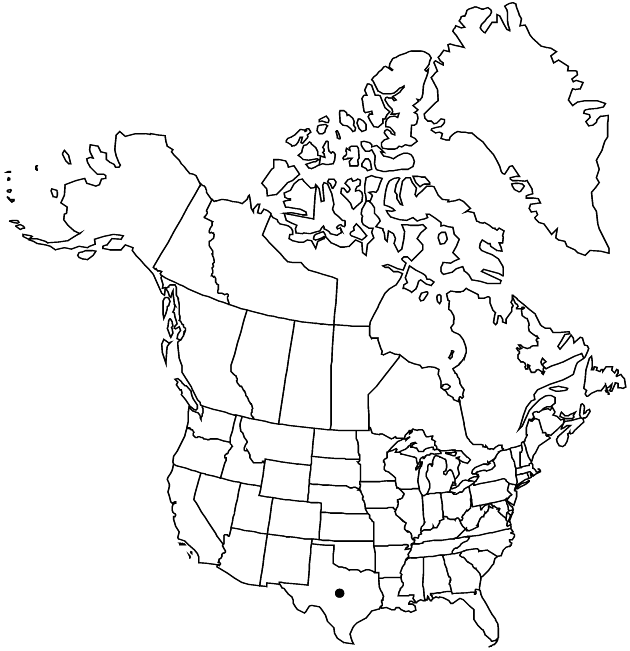Zinnia anomala
Smithsonian Contr. Knowl. 3(5): 106. plate 10. 1852.
Subshrubs, to 12 cm (rounded). Stems yellowish, much branched, strigose. Leaf blades 1- or 3-nerved, linear, 15–30 × 1–4 mm, strigose. Peduncles to 25 mm. Involucres broadly cylindric, 8–10 × 8–10 mm. Phyllaries round to oblong, becoming scarious, appressed-hairy distally, apices rounded, ciliate. Paleae yellowish (often red-tipped), apices obtuse, erose. Ray florets 0 or 5–8; corollas yellow, laminae suborbiculate to ovate, 0–6(–9) mm. Disc florets ca. 20; corollas reddish, 5.5–6.2 mm, lobes 1 mm. Cypselae 7–8 (ray) or 3–6 mm (disc), 3-angled (ray) or compressed (disc), ribbed, distally ciliate or scabrellous; pappi usually of 2 or 3 equal or unequal awns. 2n = ca. 48, ca. 84.
Phenology: Flowering spring–fall.
Habitat: Open, rocky roadsides, disturbed sites
Elevation: 200–1500 m
Distribution

Tex., Mexico (Coahuila, Nuevo León, Zacatecas).
Discussion
A. M. Torres (1963) speculated that Zinnia anomala, which often lacks rays or has inconspicuous rays, might be an octoploid derivative of the rather similar Z. grandiflora, which has showy yellow rays.
Selected References
None.